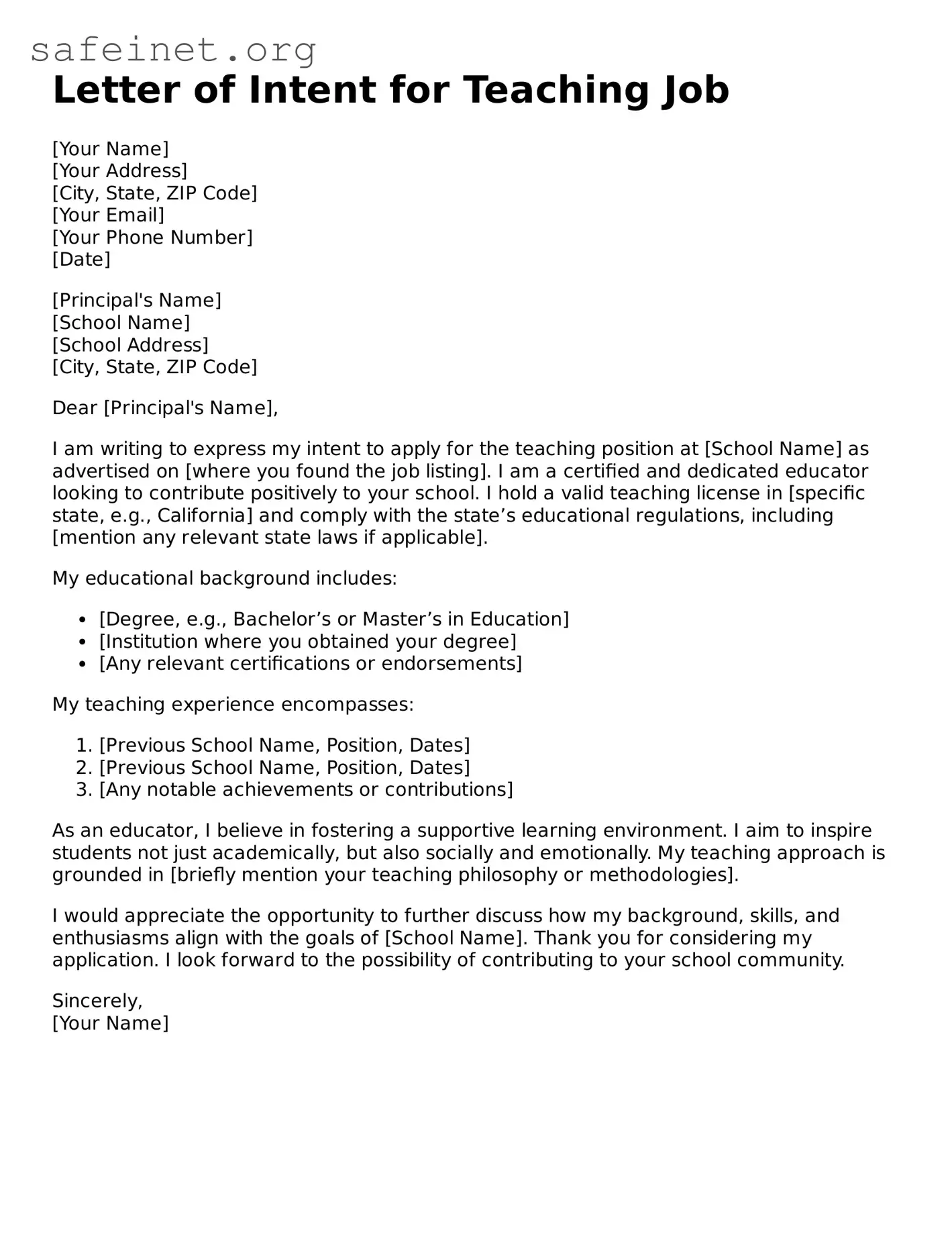What is a Letter of Intent for a Teaching Job?
A Letter of Intent for a Teaching Job is a document in which an applicant expresses their interest in a teaching position. It serves as a formal introduction to your qualifications, teaching philosophy, and reasons for wanting to work at a specific institution. This letter helps set the tone for the applicant's candidacy and provides context for their resume and other application materials.
When should I submit my Letter of Intent?
It's best to submit your Letter of Intent along with your application materials as early as possible. Many schools have specific hiring timelines, and submitting your letter promptly shows enthusiasm and professionalism. Check the application deadline for the job to ensure you send it in on time.
What should I include in my Letter of Intent?
Your Letter of Intent should include several key elements: a brief introduction of yourself, a statement of your interest in the teaching position, details about your relevant experience, and an overview of your teaching philosophy. Additionally, mention why you are specifically interested in that school or district, which will demonstrate your fit with their values and culture.
How long should my Letter of Intent be?
A solid Letter of Intent should be concise yet thorough, ideally one page in length. Avoid rambling. Instead, focus on clear, impactful sentences that capture your qualifications and passion for teaching. Brevity can help maintain the reader’s interest.
Is it necessary to address the Letter to someone specific?
Whenever possible, address your Letter of Intent to a specific person, such as the hiring manager or principal. Do some research to find the appropriate individual to whom you should direct your letter. If you cannot find a name, “Hiring Committee” or “Personnel Director” can serve as alternatives.
Can I use a template for my Letter of Intent?
While using a template can help guide your structure, make sure to personalize the content. A generic letter is easily spotted and may not resonate with the hiring committee. Tailor your message to reflect your unique experiences and connection to the school or district.
Should I include my resume with the Letter of Intent?
Yes, you should include your resume along with your Letter of Intent. The letter acts as a cover letter while your resume provides detailed information about your background and qualifications. Together, they create a complete picture of your candidacy.
How should I format my Letter of Intent?
Keep your Letter of Intent professional in appearance. Use standard fonts (like Times New Roman or Arial) and a size between 11 and 12 points. Maintain consistent margins and spacing. A formal greeting and closing, along with your contact information, will also enhance the letter’s professionalism.
What are common mistakes to avoid in my Letter of Intent?
Avoid using overly formal language or clichés, which can come off as insincere. Grammatical errors and typos can undermine your credibility, so proofread your letter carefully. Additionally, steer clear of vague statements; instead, be specific about your qualifications, experiences, and reasons for applying.
What should I do after sending my Letter of Intent?
After sending your Letter of Intent, consider following up with the school or district after a week or two. A polite email or phone call can reaffirm your interest in the position and provide an opportunity to ask if any additional information is needed. Timely follow-up demonstrates initiative and enthusiasm.
